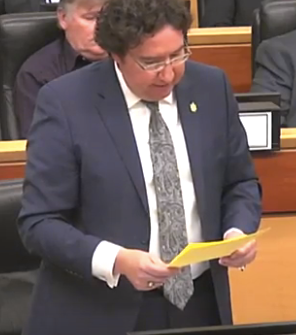
What would a good governance model look like for Niagara-on-the-Lake?
One that leaves the all-important planning decisions in the hands of locals, said NOTL’s regional councillor.
The upper-tier discussion about preparing a position for the provincial governance review hasn’t begun, but there will be definitely be a conversation, said Gary Zalepa.
And he believes it should be a collaborative effort with the 12 Niagara municipalities. “I think it’s important we work together on what we take to the Province.”
Niagara is “pretty unique” in Ontario, with different communities requiring different approaches to governance, he said. That needs to be reflected on any decision presented by Niagara.
He thinks local people make better decisions about their municipalities, especially when it comes to planning decisions, “but that doesn’t mean it has to be the exact same model as we have now. It could be a Niagara hybrid solution,” said Zalepa.
“We could take advantage of the many things we do better together, and still have some things we do better locally.”
The key point in preparing a response to the provincial governance review is “what we’re doing now that we can do better,” he said.
If it’s all about cost-savings, “that’s a suspect reason for doing this,” he added — cost savings have not been the result following past amalgamations.
“That would be a futile exercise. I’m hoping the reason is improving government, and how people interact with government.”
He agrees with Lord Mayor Betty Disero that there would not be significant cost-savings by reducing the number of part-time politicians. “That’s a false truth,” he said.
In addition, “part-time local politicians are really connected to their communities, and are much more responsive and better at making decisions. I’m not in favour of one amalgamated municipality. I don’t think that makes any sense.”
He points to the district school boards and the Local Health Integration Network, saying they don’t do a good job of representing the small municipalities well.
“The failure of the school board in Niagara-on-the-Lake is proof that bigger is not better.”
Referencing the strong local agricultural industry, Zalepa said, “NOTL has the most concentrated tender fruit land in the province, and the number of small farms makes us different than the rest of Ontario.”
NOTL also has natural heritage and unique built heritage as major driving forces in town, he said. “I can’t imagine NOTL not being one of the 12 municipalities. If I was running Ontario, why would I do that?”
But an opportunity to look at a regional planning process could have a positive impact on NOTL, one of the most heavily regulated areas in the province, with several layers of regulatory bodies — including the upper-tier Region, the Niagara Escarpment Commission, the Greenbelt Plan and other provincial policies.
“This is an opportunity to do something that would benefit the Niagara region, but still allow municipalities to make their own decisions, with a planning department resourced and staffed to be shared, but with decisions to be made locally. It would bring costs down for growth and development. It could help with affordable housing. There are strong reasons to do something like that, and that might be what the Province has in mind,” said Zalepa.
In the long run there could be a solution that would be good for NOTL and for Niagara, he said.
“Twenty years from now, it could be something we would look back on and see as better for all of us.”